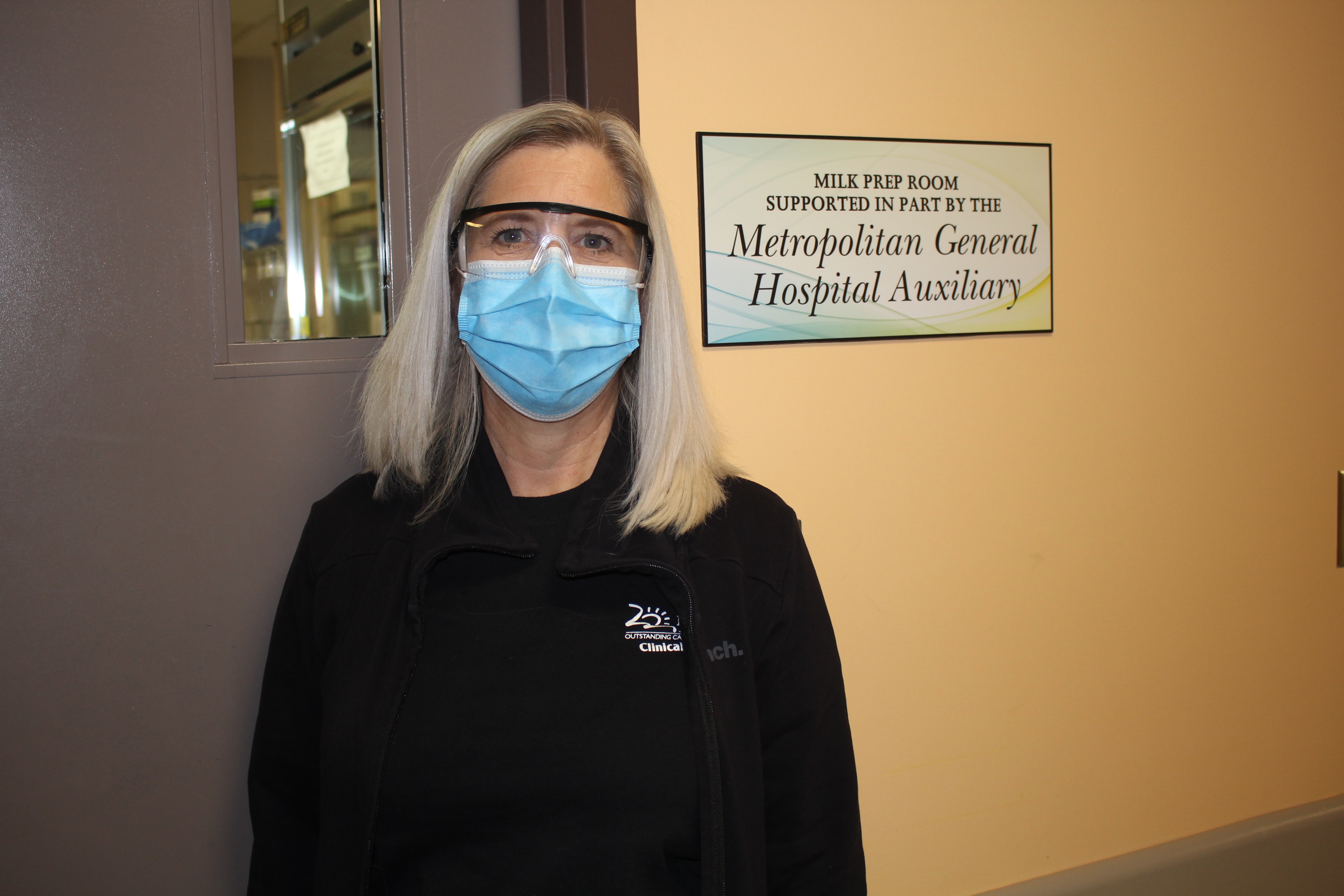By: Teresinha Medeiros, Windsor Regional Hospital Communications Coordinator
Demand for the services provided by the Infant Nutrition Centre or Milk Room at Windsor Regional Hospital continues to grow, as do the premature babies who receive the human milk for their initial feeds.
 The centre is able to dispense mother's milk and also receives and dispenses donor milk from the Rogers Hixon Milk Bank for baby's feedings and the numbers show a steady increase in its usage, but more importantly according to Laura Simons, Registered Dietitian for the NeoNatal Intensive Care Unit (pictured left), are the newborns who grow into 'nice chubby babies.'
The centre is able to dispense mother's milk and also receives and dispenses donor milk from the Rogers Hixon Milk Bank for baby's feedings and the numbers show a steady increase in its usage, but more importantly according to Laura Simons, Registered Dietitian for the NeoNatal Intensive Care Unit (pictured left), are the newborns who grow into 'nice chubby babies.'
"The biggest thing I see, as a dietitian, is I see them grow at the same rate that they should have been growing in utero," says Simons. "That's my gold standard."
The Infant Nutrition Centre/Milk Room at the Met Campus of Windsor Regional Hospital opened in May 2018 and by the end of the year, 102.24 litres of pasteurized donor human milk was used.
In 2019, it jumped to 229.20 litres. In 2020, 304.20 litres was used and so far in 2021 up until mid-December, 313 litres have been used.
The room is also used to provide 'Fresh Milk Feeds', in which a mother pumps her milk and within four hours of milk expression the baby receives the milk that has never been refrigerated. The provision of Fresh Milk Feeds is to optimize the delivery of the biological active compounds in mother's milk which support the baby's immune and gut function.
With mounting evidence of the benefits of human milk for newborns, Windsor Regional Hospital explored avenues to bridge the gap for new mothers who were unable or had delayed production of milk for a variety of reasons such as a C-Section, hypertension or fertility issues.
Human milk is easier for babies to digest, it coats and protects their digestive system and provides nutrients for optimum growth and development.
But Simon stresses the benefits of donor milk for babies extend beyond the initial feedings. Necrotizing Enterocolitis, a severe bowel disease, was commonplace in the NICU with a few cases every year. Now, it rarely occurs.
"We didn't want to give formulas as the first feed because studies have shown there is an increased chance for Necrotizing Entercolitis and feeding intolerance in premature infants," she adds.
While mother's own milk is still the preferred milk and all efforts are made to support mother's production of milk, human pasteurized donor milk is a suitable alternative.
Although there may be an initial 'ick' factor, Simons says once new moms learn the medical benefits and process that takes place for donor milk to ensure its safety, the majority are receptive to it.
The Rogers Hixon Milk Bank collects, tests, pasteurizes and distributes the human donor milk using strict criteria following the guidelines set by the Human Milk Bank Association of North America.
Donor moms are screened along with blood work. Donor moms are not paid for their milk donation but it is optimal for moms who produce an excess of amount of milk that their own babies can't use.
There are also COVID-19 and vaccine guidelines which are updated as research evolves.
Human donor milk is used for newborns born less than 2250 grams and/or under 36 weeks gestation. The babies continue to receive donor milk, sometimes feeding as little as one millimeter every two hours, until there is enough of the mother's own milk.
"The babies are able to reach a feeding volume of 100ml/kg/day sooner with the provision of human milk which means we are able to discontinue the TPN sooner," says Simons. TPN (Total Parenteral Nutrition) is also known as intravenous or IV feeding.
Simons is proud of the teamwork involved noting the program relies heavily on the milk technicians whom operate the Infant Nutrition Centre, the nurses, physicians and entire OB team for support.